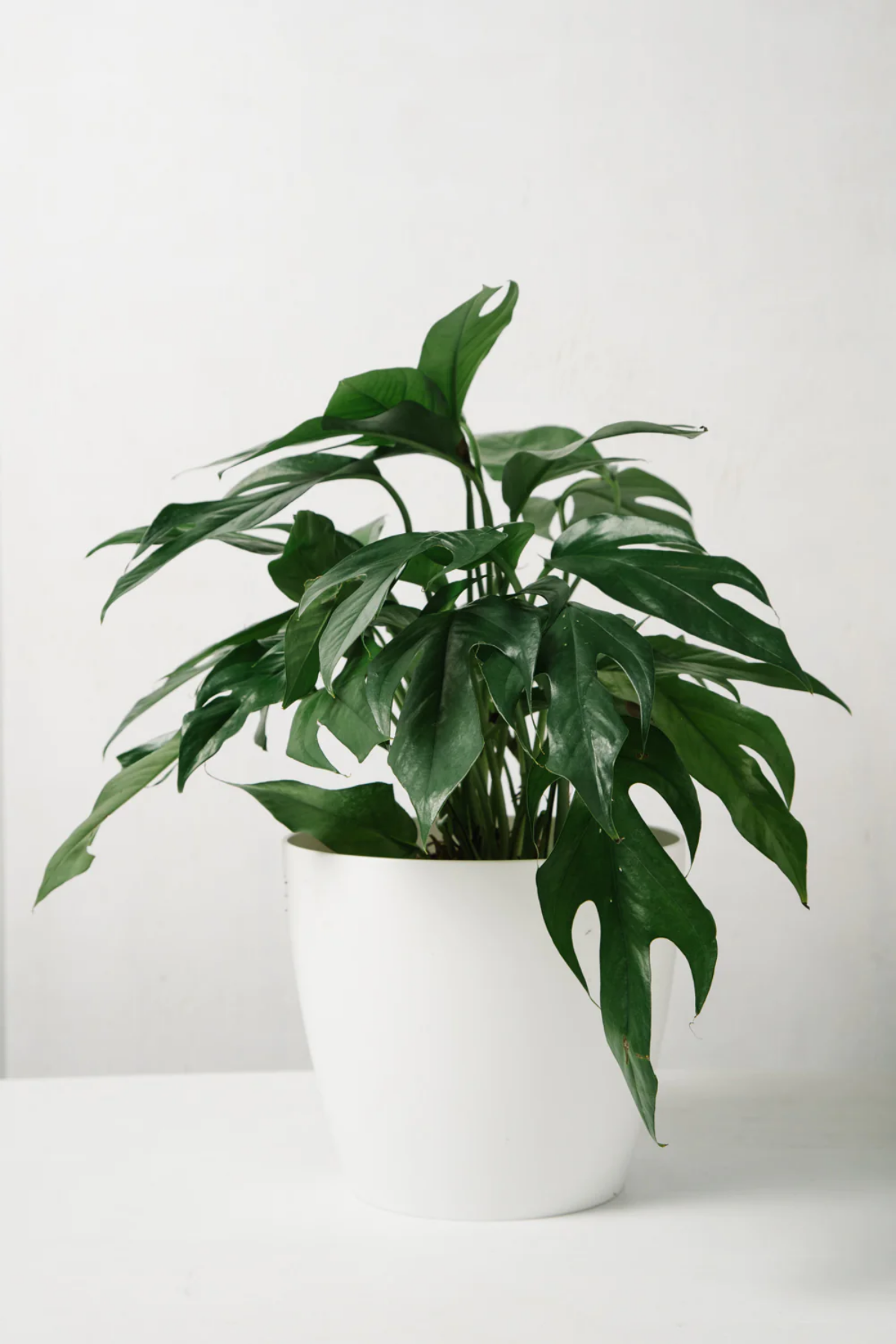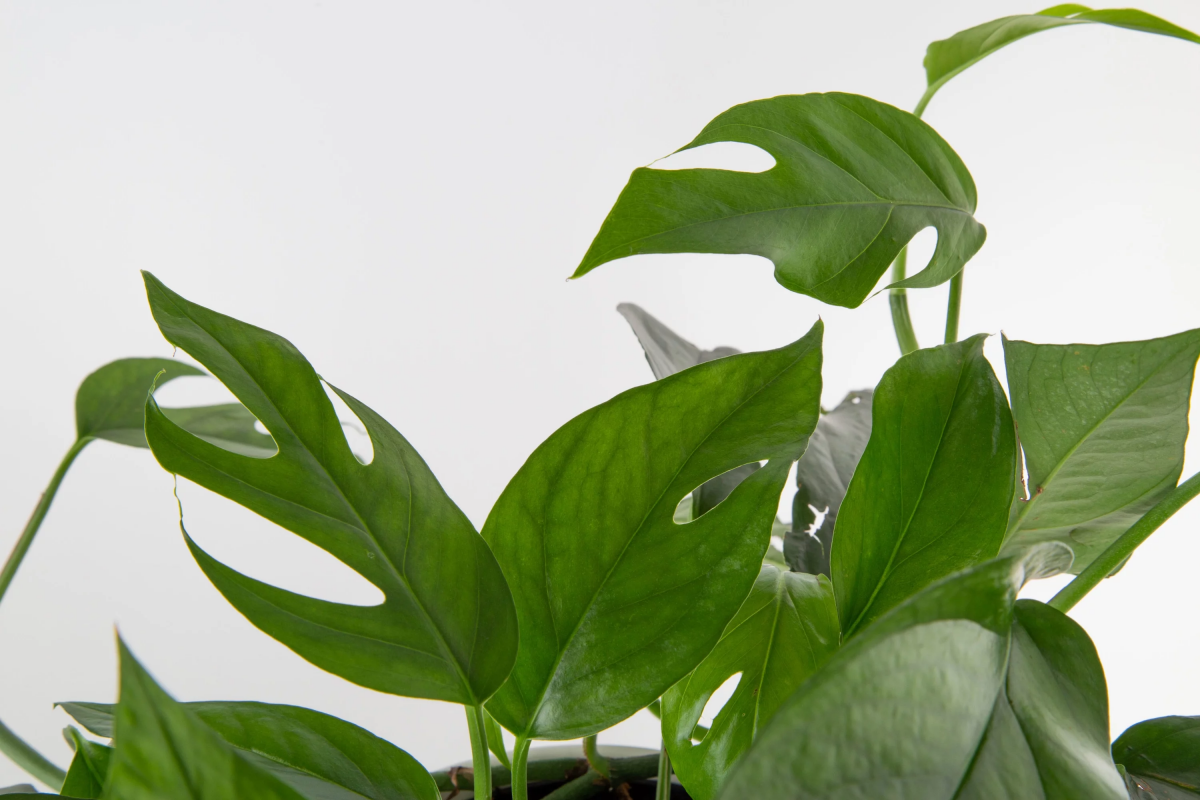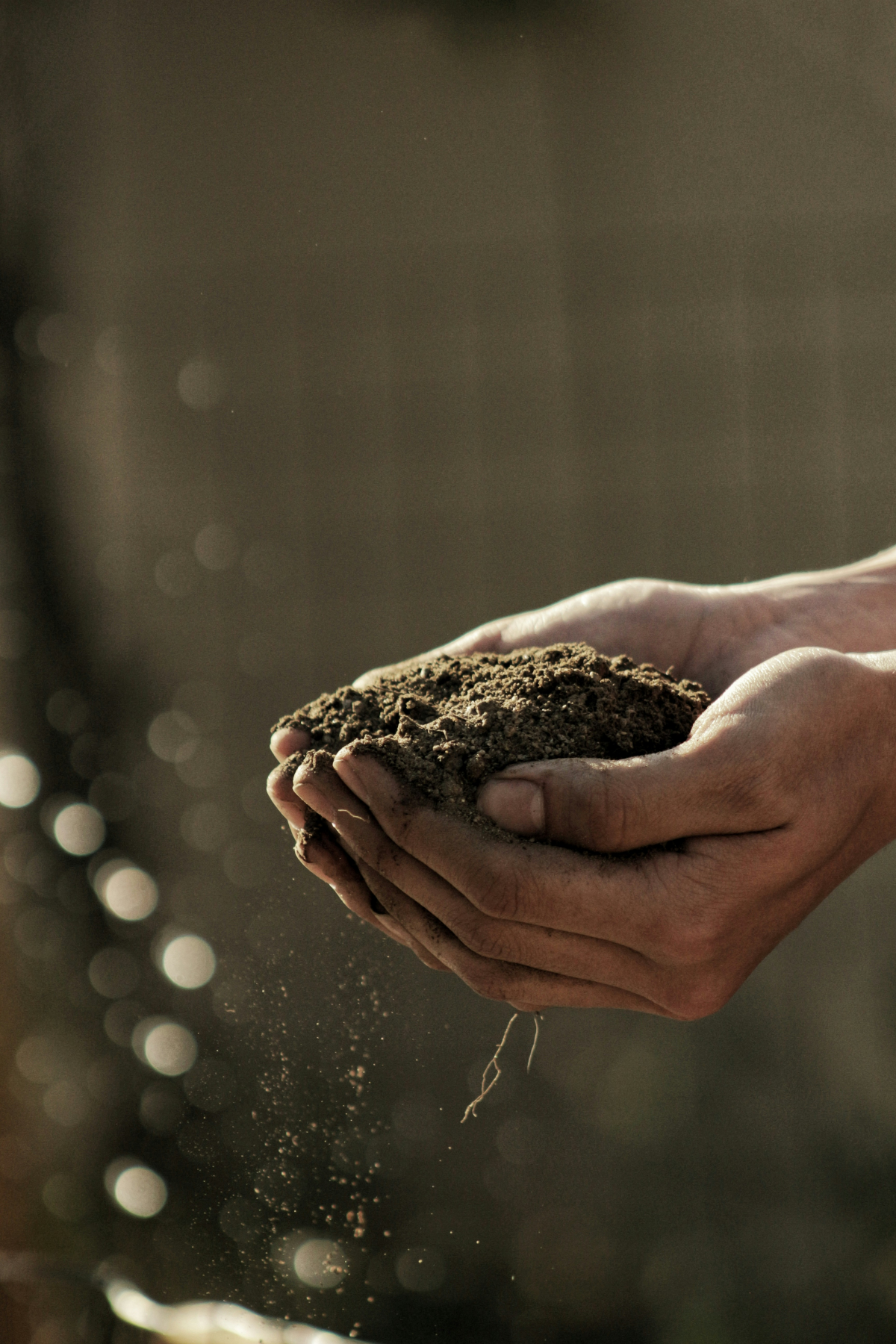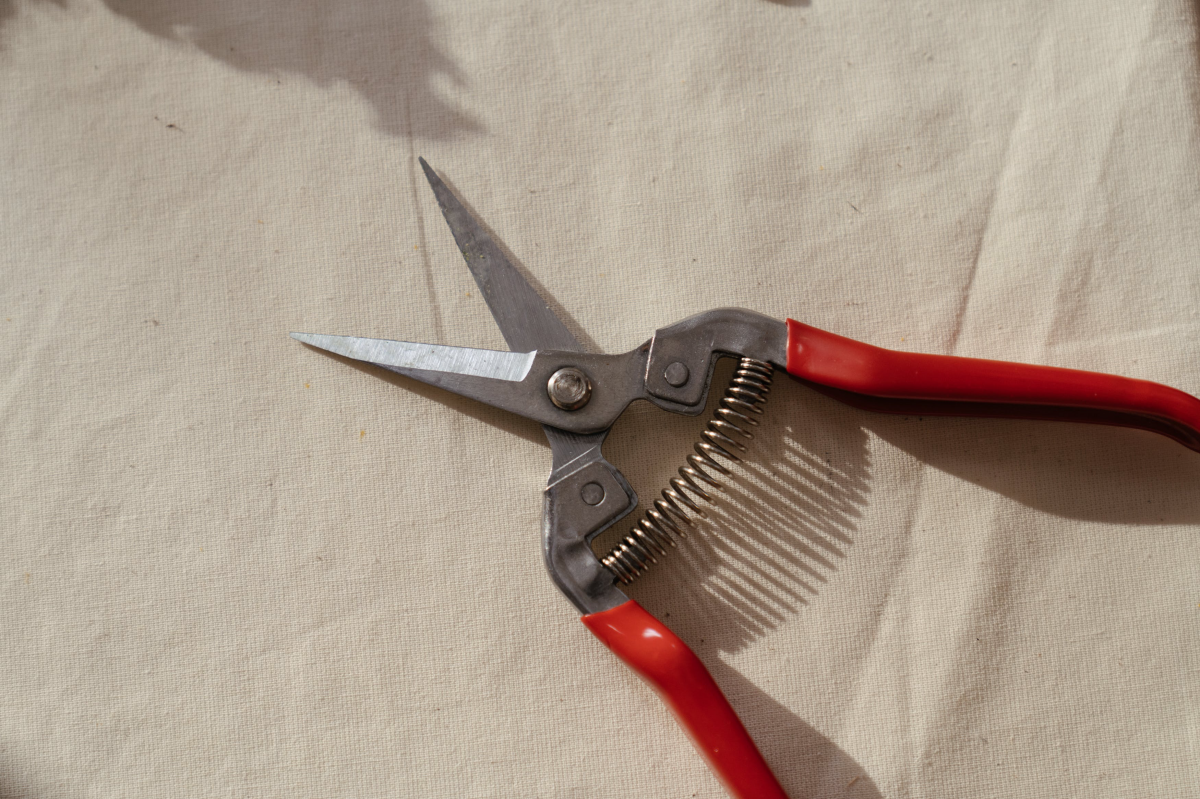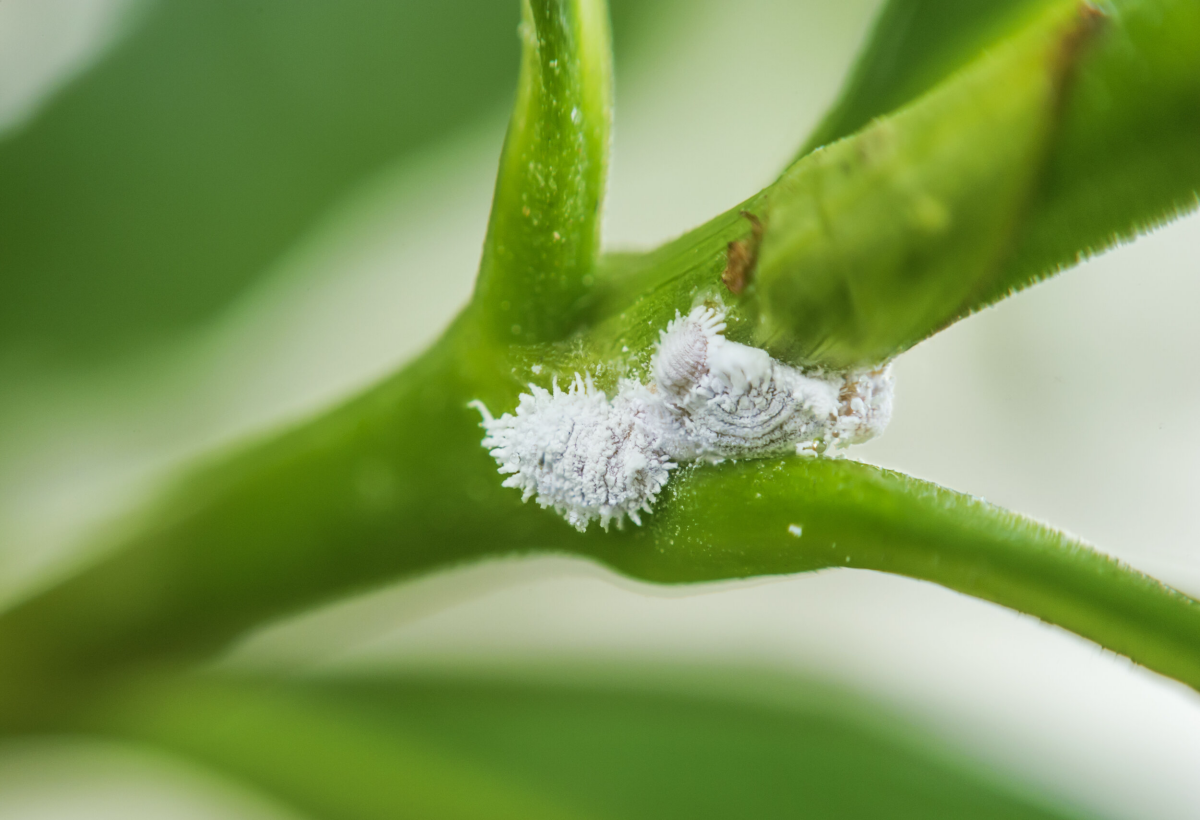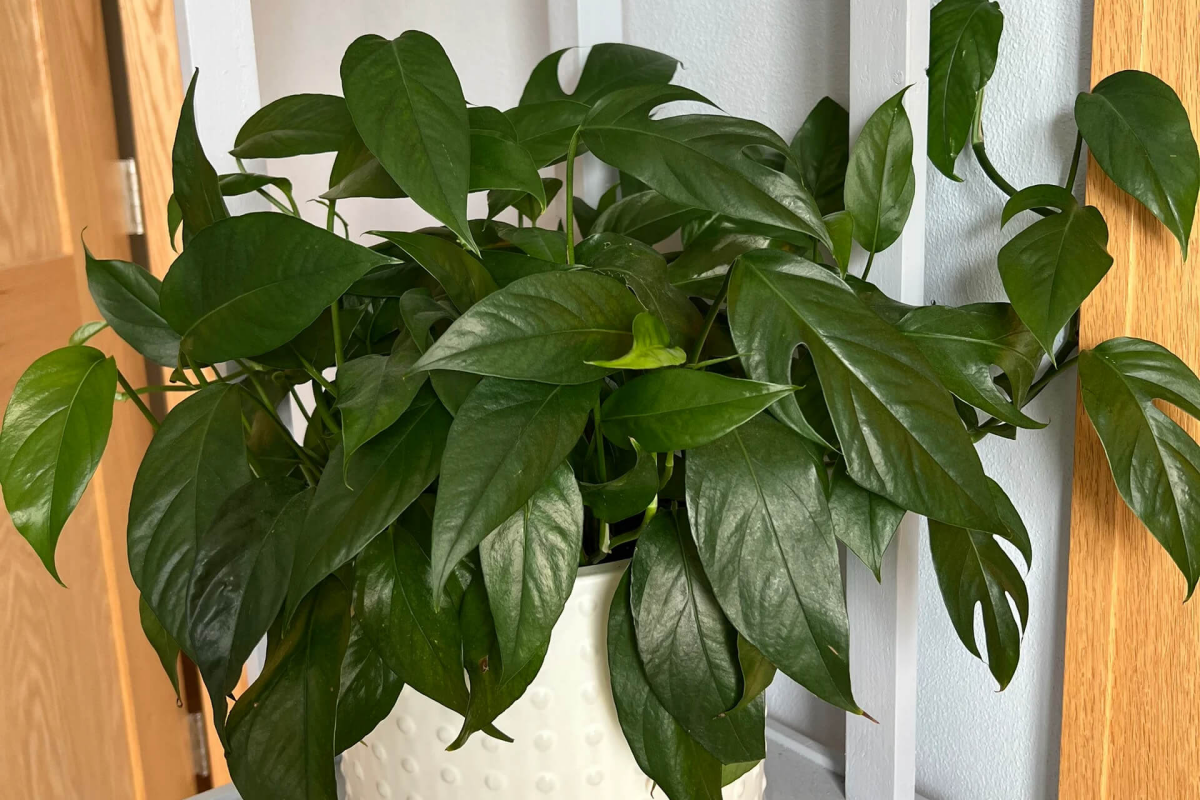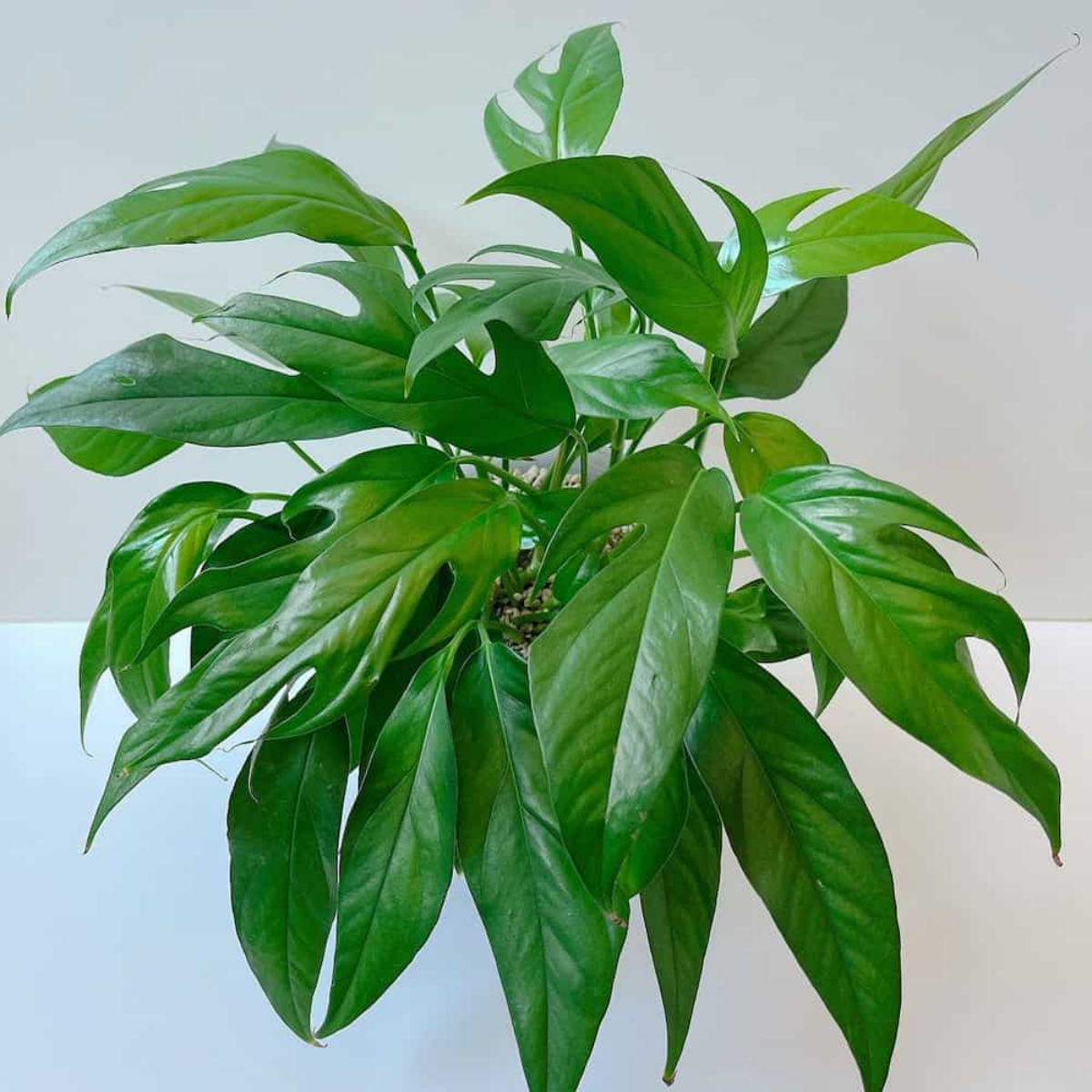Baltic Blue Pothos: How To Grow This Stunning Plant
There’s something incredibly rewarding about nurturing a plant and watching it flourish. When I stumbled upon the Baltic Blue Pothos, it felt like uncovering a hidden gem. The leaves, with their unusual blue tint, almost seemed surreal. This plant can transform any space, adding a touch of verdant elegance. It’s stunning, yes. But more than that, this plant is resilient. It’s a fantastic choice for both beginners and seasoned houseplant enthusiasts. The journey of growing this plant has been filled with learning and joy. That’s why I’m eager to share these insights with you.
Unveiling the Baltic Blue Pothos was like finding a rare, natural gem, with its surreal, blue-tinted leaves
In this article
How To Grow a Baltic Blue Pothos
My first encounter with the Baltic Blue Pothos left me mesmerized. Its distinctive coloration was captivating. The blue-green leaves, which can appear almost silvery, provide a stunning contrast. This is especially true against the more typical greens found in indoor plants. This variety, with its tropical origins, has adapted wonderfully to indoor settings. It’s a versatile addition to any plant collection. I’ve noted that it thrives best in conditions that mimic its natural habitat. This includes bright, indirect light and a humid atmosphere. Its adaptability is impressive. The plant flourishes in a range of indoor settings, all while maintaining its exotic allure.
This plant thrives indoors, demanding bright, indirect light and a humid atmosphere to flourish
Light requirements
Baltic Blue Pothos flourishes in environments with bright, indirect light, a critical factor for maintaining its unique leaf coloration. Direct sunlight, especially during the harsh midday hours, can cause the leaves to lose their luster and even burn. In my home, I’ve found the ideal spot is near a north-facing window, where the plant receives consistent but gentle light. Sheer curtains help diffuse the light, creating a perfect ambiance. Should the leaves start to look less vibrant or the variegation begins to fade, it’s a clear indicator that the plant is craving more light. Adjusting its position can quickly remedy this.
Proper lighting is crucial for maintaining the unique color and health of the Baltic Blue Pothos
Watering routine
The watering needs of Baltic Blue Pothos are moderate but require attention to avoid extremes. The ‘soil finger test’ is a reliable method I use. I check the moisture level by inserting my finger into the soil up to the first knuckle. If it feels dry, I water the plant thoroughly until water runs out of the drainage holes. This method prevents both over and under-watering, ensuring the plant gets just the right amount of moisture. The frequency of watering varies with seasonal changes. During summer, I often water it weekly, while in winter, the interval extends due to slower soil drying. Ensuring good drainage in the pot is crucial to prevent root rot, a common issue with overwatering.
Balanced watering, avoiding both extremes, is key for the plant’s well-being
Humidity and temperature
Originating from a tropical environment, Baltic Blue Pothos enjoys higher humidity levels. In my home, I maintain a humid atmosphere around the plant, especially during dry seasons. Misting the leaves or placing a water-filled pebble tray beneath the plant pot effectively increases the surrounding humidity. The ideal temperature range for this plant is between 65°F and 85°F. Sudden temperature fluctuations, typically found near drafty windows or air conditioning vents, can stress the plant, so I ensure to place it in a more stable environment.
Mimicking a tropical environment with appropriate humidity and temperature is vital for the plant
Soil and repotting
The right soil mix is vital for the health of Baltic Blue Pothos. I use a well-draining aroid mix, which includes components like perlite, peat moss, and orchid bark, facilitating adequate drainage and aeration. This mix prevents water from accumulating around the roots, a common cause of root rot. Repotting is necessary every 2-3 years or when you notice the roots outgrowing the pot. The best time for repotting is spring, which aligns with the plant’s natural growth cycle. I gently remove the plant, trim any excessively long roots, and place it in a slightly larger pot with fresh soil, ensuring a smooth transition for continued growth.
The right soil and timely repotting are essential for the health and growth of the Baltic Blue Pothos
Fertilizing
Proper fertilization is key to the lush growth of Baltic Blue Pothos. During the growing months of spring and summer, I apply a balanced, water-soluble fertilizer monthly. This regular feeding supports the vigorous growth typical in these seasons. However, in the fall and winter, when the plant’s growth naturally slows, I reduce fertilization to once every other month. Over-fertilization can lead to salt buildup in the soil, potentially harming the plant, so I make sure to follow the recommended dilution rates and frequency.
Regular fertilization during growth periods ensures the plant’s vibrancy and health
Pruning and propagation
Pruning is an enjoyable aspect of caring for Baltic Blue Pothos. Regular pruning not only keeps the plant looking neat but also promotes bushier growth. I typically prune back any overly long vines or remove yellowing leaves to maintain its aesthetic appeal. The pruned cuttings are perfect for propagation. I place them in a container of water, ensuring at least one node (the small bump on the stem) is submerged. Within a few weeks, roots develop, and the cutting can be planted in soil, creating a new plant.
Pruning and propagating not only maintain its beauty but also allow for multiplying this magnificent plant
Common issues
While Baltic Blue Pothos is generally a hardy plant, it’s not immune to pests. Spider mites and mealybugs can occasionally be a problem. I regularly inspect the leaves and stems for any signs of these pests. Wiping the leaves with a damp cloth not only removes dust but can also dislodge early infestations of pests. If an infestation is detected, I treat the plant with an appropriate insecticidal soap or neem oil solution, following safety guidelines to ensure the health of the plant and my home environment.
Regular leaf cleaning and inspection help prevent common pests and ensure healthy growth
How To Display Baltic Blue Pothos
One of the joys of owning this plant is finding creative ways to display it. I have mine in a hanging planter, which accentuates its trailing vines beautifully. It also looks great in mixed plant arrangements, adding a touch of tropical elegance. The options are endless – think wall mounts or unique containers that complement your decor. Oh, and an important note is that the Baltic Blue Pothos is toxic to pets if ingested. I always keep mine out of reach of my curious cat to avoid any accidental nibbling.
Creative displays, like hanging planters, enhance the aesthetic appeal of the Baltic Blue Pothos
Benefits Of Growing Baltic Blue Pothos
Beyond its practical benefits, the presence of a Baltic Blue Pothos in my home has been a source of immense joy and tranquility. There’s something inherently calming about being surrounded by greenery, and this plant, with its cascading vines and lush, blue-green leaves, adds a serene, natural touch to any room. It’s not just a plant; it’s a piece of living art that continuously evolves and grows, bringing a new dynamic to my living space. The calming effect of nurturing a plant, watching it grow and thrive, is a therapeutic experience that enhances my daily life. The Baltic Blue Pothos isn’t just a plant in my home; it’s a cherished companion that contributes to a healthier, more harmonious living environment.
The plant adds a calming, natural element to any space, offering serene and therapeutic benefits
Growing the Baltic Blue Pothos has been a delightful journey for me. Its striking appearance and easy care make it a must-have for plant lovers. Whether you’re starting your plant collection or seeking to add a unique specimen, the Baltic Blue Pothos is a perfect choice. I wholeheartedly encourage you to try growing this magnificent plant. It may become your new favorite, as it has indeed become mine.
Growing and nurturing a Baltic Blue Pothos is a rewarding experience for any plant lover
